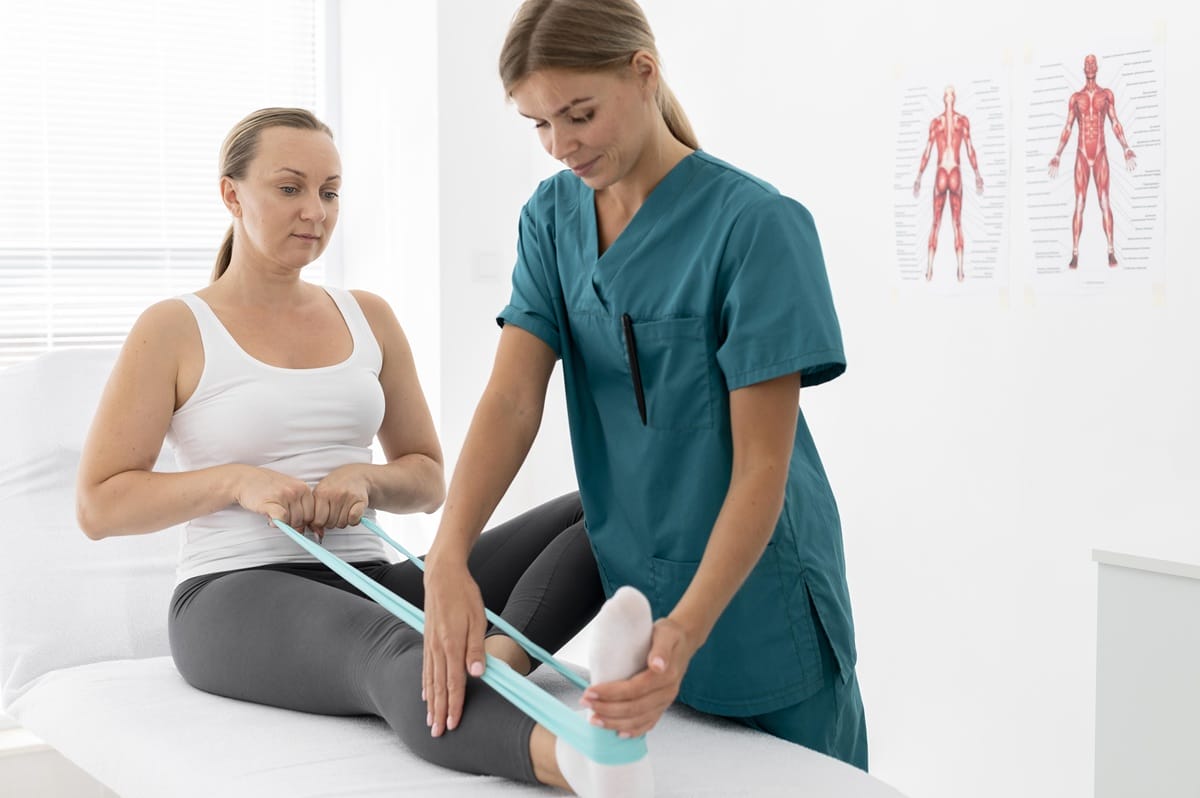Understanding the differences between Occupational Therapy and Physiotherapy
When someone we care about is recovering from an illness or injury or living with a disability or age-related condition, it’s natural to want to find the right support. But with so many therapy options out there, it can be hard to know where to begin. Two of the most commonly recommended therapies are Occupational Therapy and Physiotherapy.
They may sound similar, and they often work together, but each has its own focus and approach to helping people live more comfortably and independently.
In this article, we’ll explain the key differences and similarities between Occupational Therapy and Physiotherapy. Whether you’re a caregiver looking for guidance, an NDIS participant exploring supports, or simply curious to understand more, we’re here to make things clear. Plain and simple.
What is Occupational Therapy?

Occupational Therapy (OT) helps people do the everyday tasks that matter most to them. That could be anything from brushing your teeth and making lunch to catching a bus or getting back to work.
An occupational therapist works with each person to understand what they want to achieve and what might be getting in the way. This includes looking at their abilities, daily routines, and health condition, then creating a personalised plan to support their goals. The goal is to build confidence, independence and a better quality of life.
OT can support people who:
- Are recovering from a stroke and need to relearn daily tasks
- Have conditions such as arthritis or dementia
- Are living with physical, intellectual or developmental disabilities
- Need changes made to their home or assistive equipment
- Have sensory challenges (often seen in children and people with autism)
OT goals and methods
- Focus: Everyday function and life skills
- Setting: At home, school, work or out in the community
- Interventions may include:
- Exercises to improve coordination and hand skills
- Advice on tools or technology to make tasks easier
- Help with routines and managing emotions
- Safety checks and changes at home
- Strategies to manage sensory overload
Occupational Therapists also think about environmental factors – like how your surroundings or routine may be helping or making things harder. They work to adjust these factors so you can feel more comfortable and in control.
What is Physiotherapy?

Physiotherapy treatment focuses on helping your body move better. It’s often used after injuries, surgery, illness or long-term conditions that affect how your body works.
Physical therapists use exercise, movement techniques and hands-on therapy to reduce pain, improve strength, and support recovery. They also create treatment plans that are designed around your needs and your goals.
PT can support people who:
- Are recovering from surgery, injury or a fall
- Have ongoing pain or conditions like arthritis or multiple sclerosis
- Struggle with walking or moving because of ageing or nerve issues
- Have poor balance, strength or flexibility
- Need rehab after a stroke or spinal cord injury
PT goals and methods
- Focus: Strength, movement and recovery
- Setting: Hospitals, clinics, aged care homes or in your own home
- Interventions may include:
- Exercises to improve strength and mobility
- Techniques to manage pain
- Balance and walking training
- Massage, joint movement or stretching
- Help with posture and injury prevention
Each physiotherapy treatment is shaped by your health condition and how your body responds over time. Your physiotherapist will check in regularly to make sure the approach is still right for you.
Key differences between Occupational Therapy and Physiotherapy

Both therapies aim to improve your independence and wellbeing, but they work in different ways.
Occupational Therapy is about helping you take part in daily life. That includes things like getting dressed, cooking, cleaning, working or socialising. It also supports people emotionally and mentally, especially when tasks feel overwhelming. OTs may recommend small changes to your routine, tools to make things easier, or strategies to help you feel more in control.
Physiotherapy focuses on how your body moves. It’s designed to help with physical issues like pain, stiffness or weakness. Physiotherapists use movement, exercise and manual therapy to help you recover and stay strong.
In simple terms, occupational therapists help people do the activities that matter to them, and physiotherapists help people move so they can do those activities safely and comfortably.
Both therapies involve working with people of all ages and needs, using expert knowledge and genuine care to support positive outcomes.
Where do they work together?
OT and PT often go hand in hand, especially when someone has more complex support needs. For example:
- A person with a spinal cord injury may see a Physiotherapist to build muscle strength, and an Occupational Therapist to relearn how to cook, shower or drive.
- An older adult recovering from a hip replacement may need PT to walk safely again, and OT to adjust their home and daily routine to prevent falls.
- A child with autism might benefit from PT for movement and balance, and OT for sensory needs and everyday routines.
At St Jude’s, our Allied Health team works together to provide well-rounded, person-centred care. Because when it comes to support, there’s no one-size-fits-all approach.
Finding the right support through the NDIS

Both Occupational Therapy and Physiotherapy are available as Allied Health supports through the National Disability Insurance Scheme (NDIS). If they match your goals and needs, they can be included in your NDIS plan.
At St Jude’s, we offer NDIS-funded:
- Occupational Therapy for children, adults and older people
- Physiotherapy for people recovering from injury, surgery, or living with long-term physical conditions
- Sessions at home, in school or in the local community
If you’re not sure where to start, our friendly team can help. We regularly support participants, carers and Support Coordinators to find the right therapies and create treatment plans that work in real life.
How St Jude’s can help
At St Jude’s, we’ve been working with people in Western Australia for over 40 years, delivering Allied Health, aged care and disability support with warmth and respect.
We offer:
- Flexible therapy options – including both Occupational Therapy and Physiotherapy
- In-home or community-based sessions across Perth and regional WA
- Experienced therapists who truly listen to what matters to you
- Supports funded through NDIS or aged care programs
Whether your goal is to move better, feel stronger, regain confidence or reduce stress at home, we’ll create a plan that works for you.
Let’s talk about what’s possible
Ready to explore therapy services or looking for support as a caregiver?
Get in touch with our team today. We’ll make sure you find the right fit – and take the next step with confidence.